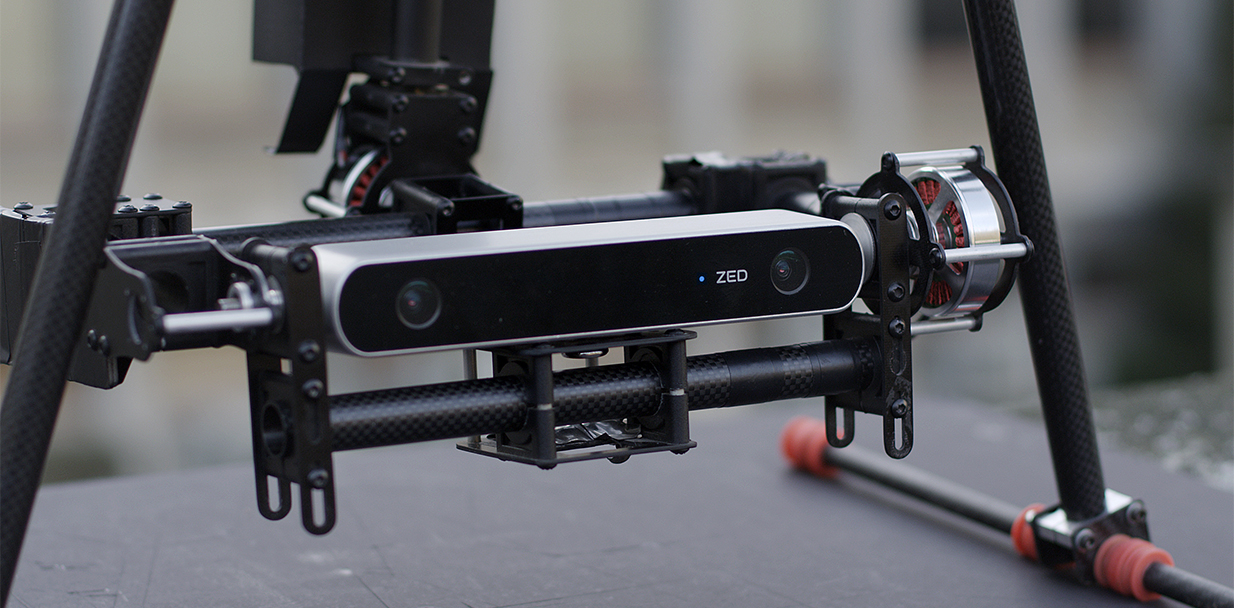

In this paper, we use another approach to solve the short measurement range problem, which is a disadvantage of short-baseline stereo cameras (SBSC) used on small platforms for autonomous navigation. Small platforms are limited in providing large memory capacity and computational power for precise disparity calculations. Second, the platform must provide large memory capacity and computational power to use the CNN-based stereo matching method. First, a CNN-based stereo matching method requires many datasets to train the model and may not work well in environments different from the environment where the datasets used in the training were collected. This method has two limitations although it can calculate the disparity precisely. Recently, a convolutional neural network (CNN)-based stereo matching method such as PSMNet was proposed. The disparity can be calculated more precisely as a way of improving the detection range without having a large baseline of the stereo camera. Furthermore, even if the baseline is long, it will not detect the distance as accurately as LiDAR.

However, if the baseline is long, the advantage of the stereo camera over LiDAR-it is small and can be mounted on a small platform-disappears. The longer the baseline is, the longer the distance that the stereo camera can measure.

The baseline is a value of the stereo camera that has the greatest influence on distance measurement. The method for measuring the distance from a stereo camera is to calculate the disparity using stereo matching and use the characteristics of the stereo camera, such as focal length and baseline. Second, the distance that can be measured by stereo cameras is shorter than that of LiDAR. First, although various methods have been proposed to overcome this by adaptively controlling exposure, they are affected by lighting changes. However, stereo cameras have two drawbacks, different from LiDAR. Moreover, RGB images provided by the stereo camera can be used for other purposes as well, such as object detection or tracking. Unlike LiDAR, it is easy to mount a stereo camera on a small platform because it can be made passively in a small size and measure distance. Furthermore, the size of the battery loaded on a small platform is small, and if a LiDAR is mounted, it will cause problems such as a shorter operation time and a narrower operation range.
#ZED CAMERA GET DEPTH MAP VALUE PYTHON INSTALL#
However, small platforms, such as service robots and drones for small delivery, may not have enough room to install LiDAR. In the case of large platforms, such as autonomous vehicles, there is plenty of room to install a LiDAR, and there is no problem in supplying power to the LiDAR. The second constraint is the LiDAR sensor needs a lot of power from the platform because it must generate signals actively. When the size of the platform is small, it may be difficult to mount a LiDAR sensor because of its size. The first constraint is the size of the LiDAR sensor. However, there are two constraints to using LiDAR on a platform. LiDAR is applied on various platforms because it has a long detection range without being affected by lighting changes. LiDAR and stereo cameras are typical range sensors that provide distance measurements, among sensors that can be mounted on platforms. Range sensors are required to recognize the surrounding environment for autonomous platforms, such as autonomous vehicles, service robots, and drones.


 0 kommentar(er)
0 kommentar(er)
